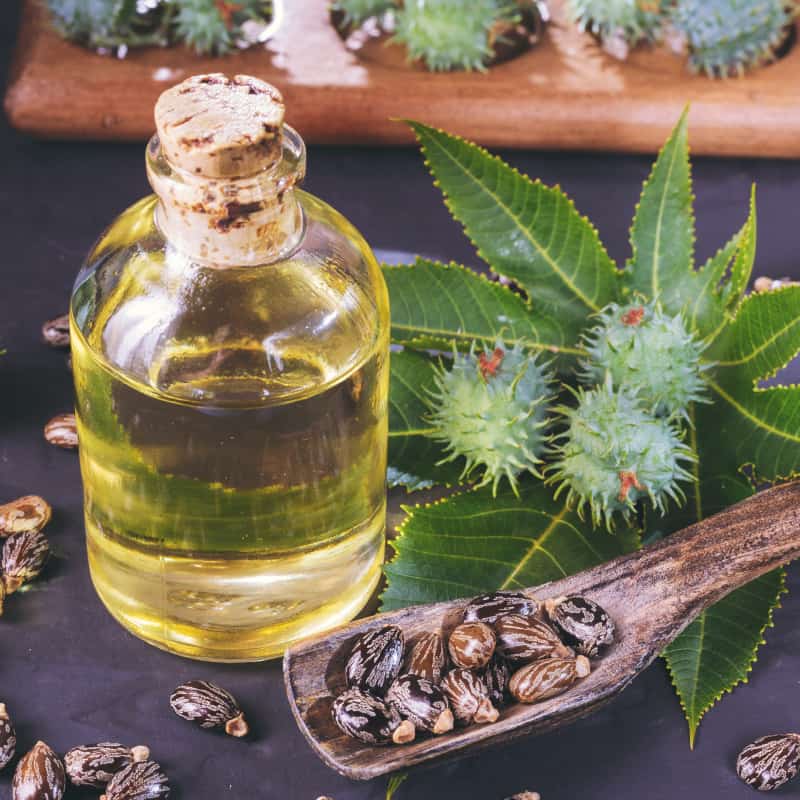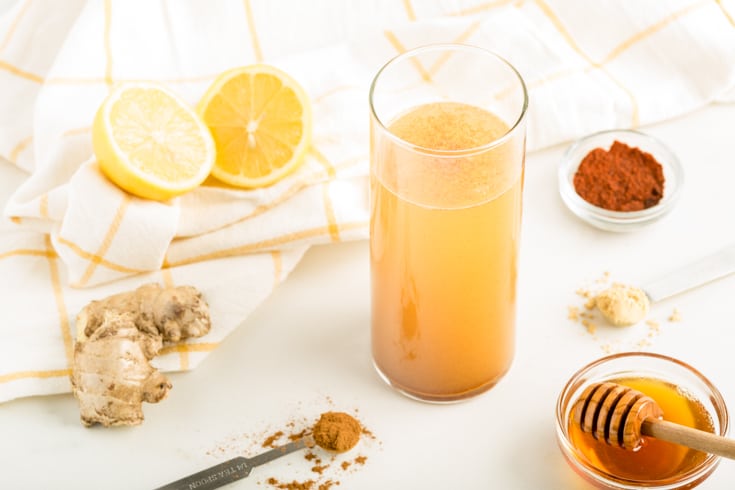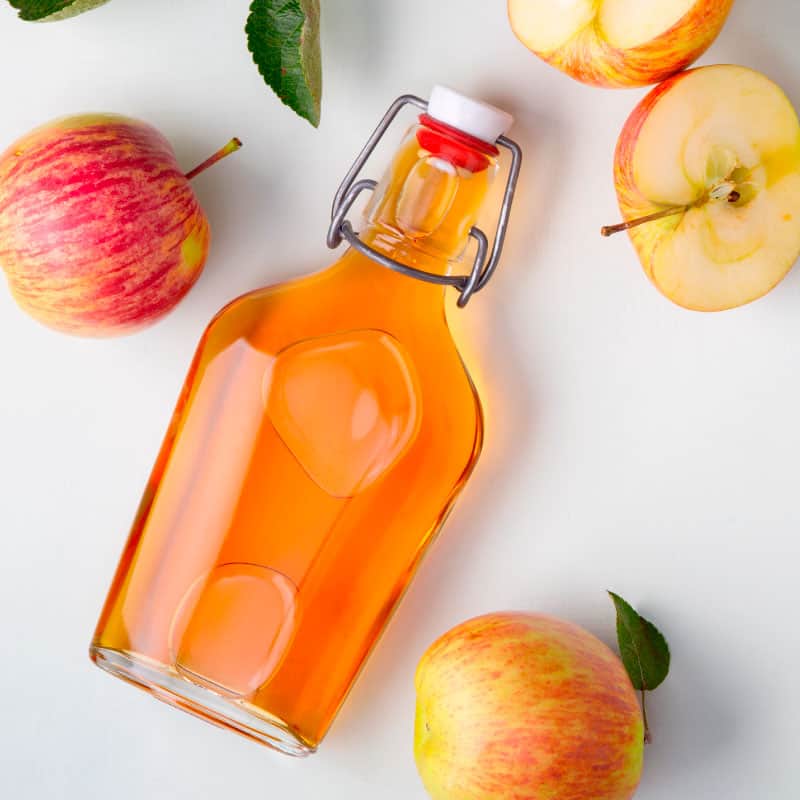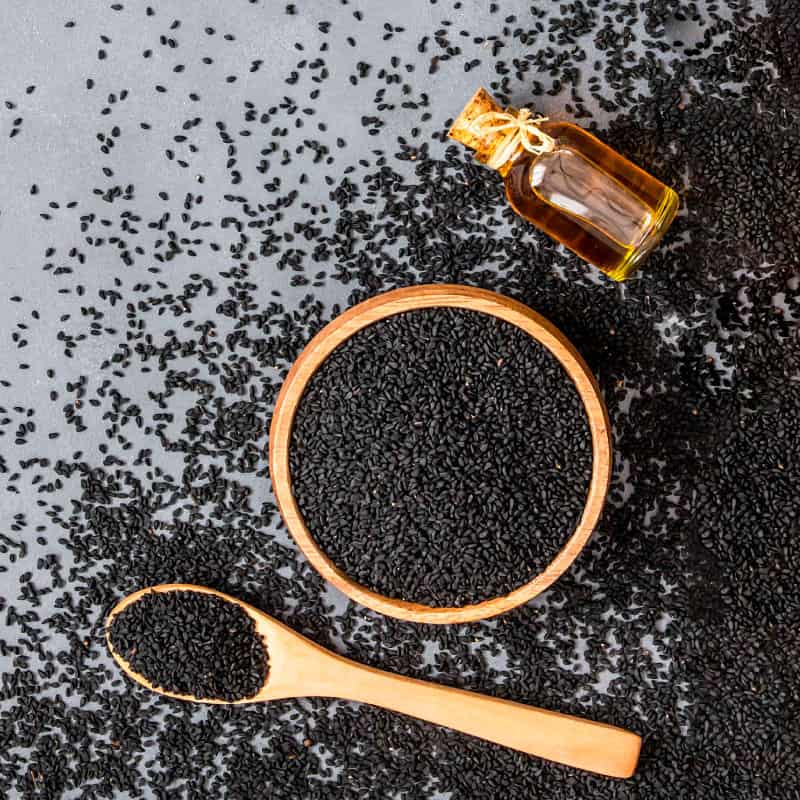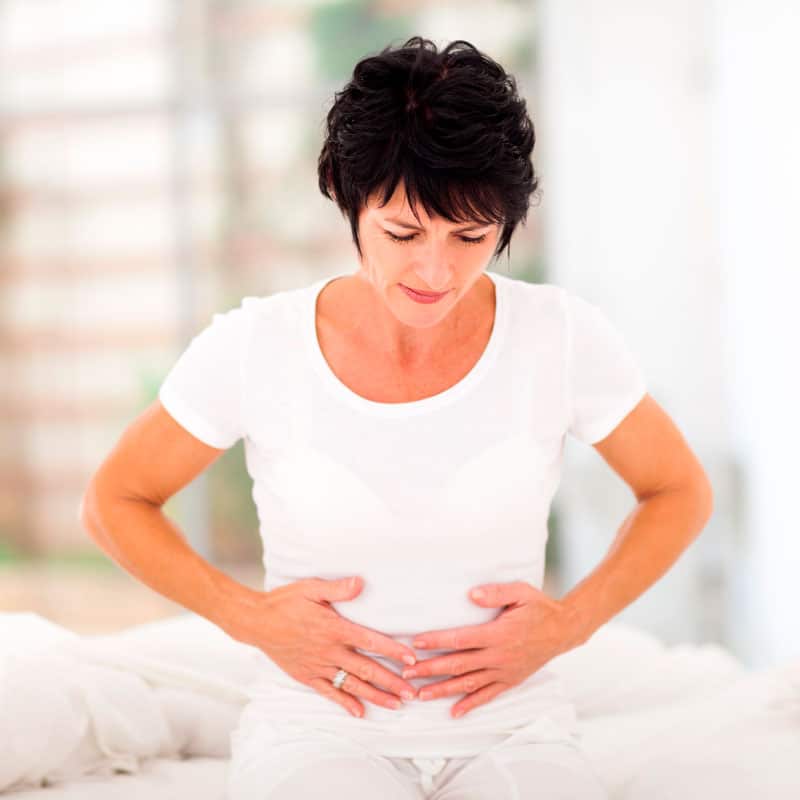This Dr. Axe content is medically reviewed or fact checked to ensure factually accurate information.
With strict editorial sourcing guidelines, we only link to academic research institutions, reputable media sites and, when research is available, medically peer-reviewed studies. Note that the numbers in parentheses (1, 2, etc.) are clickable links to these studies.
The information in our articles is NOT intended to replace a one-on-one relationship with a qualified health care professional and is not intended as medical advice.
This article is based on scientific evidence, written by experts and fact checked by our trained editorial staff. Note that the numbers in parentheses (1, 2, etc.) are clickable links to medically peer-reviewed studies.
Our team includes licensed nutritionists and dietitians, certified health education specialists, as well as certified strength and conditioning specialists, personal trainers and corrective exercise specialists. Our team aims to be not only thorough with its research, but also objective and unbiased.
The information in our articles is NOT intended to replace a one-on-one relationship with a qualified health care professional and is not intended as medical advice.
How to Get Rid of Period Cramps: 12 Natural Remedies
November 20, 2023
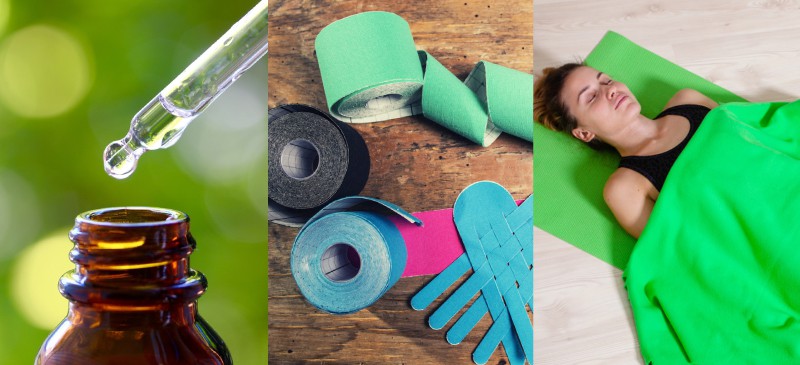
Ever wonder how to get rid of period cramps? While many women suffer from PMS symptoms each month, period cramps are the most commonly reported menstrual disorder — with over up to 84 percent of young women experiencing some level of menstrual pain at some point during their lives. Forty three percent report that pain occurred during every period.
For nearly 10 percent of women, the level of pain and discomfort during their menstrual cycle as well as co-occurring symptoms are temporarily disabling. This extreme form of period pain is called dysmenorrhea.
Because menstrual cramps impact school attendance and performance, as well as work attendance and productivity, it’s a health issue that plenty of research has been done. Let’s learn more about the potential natural remedies for period cramps.
What Are Period Cramps?
Period cramps occur just before the during the menstrual cycle. Dysmenorrhea is the medical term used for painful menstrual cramps.
What causes period cramps? During menstruation, the uterus contracts as it gets rid of the lining — that’s what the blood is. The contractions are what cause the cramping. That’s normal cramping, anyway. Other conditions, like endometriosis and adenomyosis, can also trigger period cramps.
The cramps typically start a couple of days before the period begins and continue for two to three days during the period. The painful sensation is caused when the uterus physically contracts to aid in the expelling of the uterine lining.
Pain varies widely from woman to woman, and can range from minor discomfort to temporarily debilitating. The severity of cramps tends to lessen as women age and the level of prostaglandins naturally decreases. This type of cramping during the menstrual cycle is called primary dysmenorrhea.
Primary dysmenorrhea occurs in healthy women as the uterus contracts. It’s often described as a cramping or constant ache in the lower belly and lower back back, and it can even radiate through the thighs and down the legs. The intensity varies; some women don’t experience cramps or they’re very mild, while for other women, it can be painful enough that normal day-to-day activities are affected.
Additional period pain side effects can include nausea, vomiting, fatigue and diarrhea. Primary dysmenorrhea generally becomes less painful as women age, and it may stop entirely after giving birth.
When there is an underlying reproductive disorder or disease contributing to or causing the cramping during a menstrual cycle, it is called secondary dysmenorrhea. For women with secondary dysmenorrhea, the pain tends to arrive earlier in the cycle and last longer. However, unlike those with primary dysmenorrhea, the discomfort is typically not accompanied by nausea, vomiting, fatigue or diarrhea.
While dysmenorrhea is generally not a cause for alarm, seek emergency medical attention immediately if you experience:
- Cramping along with excessive bleeding
- If tissue passes in the menstrual flow
- If you have fever or chills
- If the pain suddenly appear or worsens
- If you faint or become dizzy
- If you might be pregnant
Conventional Treatment
For a proper diagnosis, and to rule out any underlying conditions, your healthcare provider will do a full examination, including a pelvic exam. If there any abnormalities that cause concern, your doctor may order an ultrasound, CT scan, MRI or laparoscopy.
What relieves period cramps? This also depends on the woman. Over-the-counter medications can help, as can birth control pills (but the latter come with their own potentially serious side effects and issues). Warm compresses applied directly on the abdomen can help. But ultimately, many women just wind up grimacing and bearing the pain each month.
While cramps can be painful, and even debilitating, physicians normally recommend over-the-counter (OTC) painkillers to treat the discomfort. However, there are many natural remedies that have been shown to reduce common PMS symptoms and cramps.
Natural Remedies
1. Calcium
Long-heralded in the treatment of PMS symptoms including fatigue, moodiness and bloating, recent research indicates that 1,000 milligrams of calcium per day is effective for reducing menstrual pain intensity.
In a small, randomized double-blind trial, participants given 1,000 milligrams of calcium from the 15th day of their cycle until pain disappeared, for three full menstrual cycles, reported a significant decrease in pain levels.
During your period, increasing your intake of calcium-rich foods like whey protein, sardines, goat milk kefir, raw milk and white beans may help reduce symptoms in addition to supporting strong bones, healthy blood pressure levels and proper muscle and nerve function.
2. Vitamin D
With research indicating that perhaps as many as 90 percent of adults in the U.S. are vitamin D deficient, boosting levels through supplementation and diet changes is common. Research shows a weekly dose of 50,000 IU oral vitamin D significantly decreases the severity of pain for those with primary dysmenorrhea.
The randomized double-blind placebo-controlled clinical trial published in the peer-reviewed journal Gynecological Endocrinology found that women with primary dysmenorrhea given the dosage weekly for eight weeks experienced less pain, and even one month after treatment had stopped, pain levels were better than before treatment.
In addition to supplementation, boost your vitamin D intake by spending more time in the sun without sunscreen. Sunshine is the No.1 way to easily and safely increase your vitamin D levels and just 10 to 20 minutes a day is all you need. For extra enhancement, add vitamin D-rich foods including wild-caught fish like halibut, mackerel, salmon and swordfish, as well as mushrooms exposed to ultraviolet light, to your diet.
3. Vitamin E
This fat-soluble vitamin is well-known for its power to balance cholesterol, promote healthy skin and hair, improve vision and even balance hormones. And now, research shows that 500 IU of vitamin E two days before your period starts, and continued for three days after your period begins, may reduce menstrual cramping.
In this randomized, placebo-controlled trial of students with primary dysmenorrhea, half were given a placebo and the other half were given vitamin E for two consecutive menstrual cycles. While both groups showed improvement in symptoms, the group that received the vitamin E experienced greater effects and relief.
That said, vitamin E supplementation isn’t appropriate for everyone. If you are on blood thinners, have heart disease, diabetes, retinitis pigmentosa or cancer of the head, neck or prostate, you should avoid high doses of vitamin E. Instead, increase levels by including vitamin E-rich foods into your diet like almonds, spinach, sweet potatoes and avocado.
4. B Vitamins
Vitamin B1 shows promise for reducing pain in women with primary dysmenorrhea. In a review of clinical trials, researchers found in one large randomized controlled trial that women given 100 milligrams of vitamin B1 daily experienced less pain than women who were given a placebo.
To support general wellness and help alleviate a wide range of symptoms during your period, take a high-quality B vitamin complex supplement that gets its nutrients from real food sources.
5. Omega-3 Fatty Acids
Our bodies don’t produce omega-3 fatty acids, so we have to get it from foods and high-quality supplements. Known for supporting heart health, brain health, reducing inflammation and much more, a randomized double-blind, placebo-controlled study published in the journal Reproductive Health found 1 to 2 grams of fatty acids daily may help to reduce period cramps and other PMS symptoms.
While a small trial, the findings were significant. One group received one gram of omega-3 fatty acids daily while another group received two grams of omega-3 fatty acids daily. Both groups reported a significant reduction in pain at three months, but the group that received the two-gram dosage experienced even more significant results.
As a supplement, using just one tablespoon of a high-quality fish oil provides just over 4.5 grams of omega-3 fatty acids. In addition to a high-quality supplement, add wild mackerel, walnuts, chia seeds, Alaskan salmon and flaxseeds to your diet.
6. Extra-Virgin Olive Oil
Olive oil might help fight period pain symptoms. In a 2015 study, 60 female students who suffered from moderate to severe menstrual cramps were separated into two groups.
The women were all between the ages of 17 and 30 and received one of two pain treatments over the course of four menstruation cycles: either 25 mL, or 5 teaspoons, of extra virgin olive oil daily for two months, starting two weeks before the start of their cycle, and then 400 milligrams of ibuprofen three times a day in the first three days of their next two menstrual cycles, when pain is most heightened.
The second group was essentially the same, except the women received the ibuprofen for the first two months and the extra virgin olive oil in the last two months. In both cases, the pain was significantly reduced for the women in the olive oil group and, as they continued taking the EVOO, their pain continued declining.
A 2021 study examined the effect of olive oil for prostaglandin-induced uterine hypercontraction and pain in mice. The results were impressive. According to the results, extra virgin olive oil ACN layer extracts and oleocanthal binded the same site of COX-2 as ibuprofen, helping to achieve an analgesic effect for primary dysmenorrhea.
This is likely because extra virgin olive oil is a powerful anti-inflammatory. If you’re wondering how to get rid of period cramps with olive oil, it’s easy. Try it with your salad or, as the researchers suggested, as a food supplement.
7. Yoga and Meditation
Known for reducing stress and anxiety as well as improving balance and coordination, research shows that practicing yoga daily along with meditating can relieve pain associated with the menstrual cycle.
In a study of 113 medical students diagnosed with primary dysmenorrhea, those that completed a three-month program of practicing yoga 40 minutes every day, along with pranayama and meditation for 10 minutes every day, experienced a significant decrease in pain.
A 2019 study also investigated the impact of yoga on menstrual pain in primary dysmenorrhea. Four trials with 230 participants were conducted, and yoga was found to be an effective intervention.
A 2023 narrative review included 10 studies and examined the impact of a varied set of 39 asanas, 5 pranayamas and yoga nidra on dysmenorrhea. The studies found that those who practiced this yoga “set” experienced both improved pain tolerance and reduced stress levels.
8. Acupuncture
Used for a wide range of ailments including headaches, seasonal allergies, mood disorders, chronic pain and addiction, research now supports acupuncture for dysmenorrhea patients. In an analysis from a large randomized controlled trial published in the journal BMC Complementary and Alternative Medicine, acupuncture was given at points Spleen 6, GB39 or a non-acupoint. All three groups reported a significant decrease in pain.
In a clinical trial conducted by the Osher Center for Integrative Medicine at the University of California, San Francisco acupuncture plus vitamin K injections were tested in women with primary dysmenorrhea. Those who received a vitamin K1 injection at Spleen 6 at the start of menstruation had a significant decrease in the intensity of pain and a decrease in duration of other menstrual symptoms. Of note, 80 percent of those in the trial reported wanting to continue monthly treatments.
9. Water Aerobics/Aquatic Exercise
While exercise is generally recommended to reduce PMS symptoms, including cramping, vigorous exercise is often too much for those experiencing significant discomfort.
However, a small study of nonathletic young women with primary dysmenorrhea found that the severity and the duration of the pain decreased significantly after 12 weeks of aquatic exercises. Researchers didn’t specify exercises conducted, but lap swimming and water aerobics may be beneficial in reducing pain.
10. Sleep
It’s not your imagination: You may be more tired during your period. Hormonal changes during your cycle are to blame and, according to the National Sleep Foundation, 30 percent of women experience disturbed sleep during their periods because of issues like cramps and pain, headaches, bloating and anxiety.
So what do you do when all you want is to crawl in bed and sleep for period cramp relief, but you find yourself suffering insomnia instead? If you know that you regularly have trouble sleeping during your cycle, you can take steps ahead of time to prepare. Your body temperature can rise over the course of your cycle, so make sure your room is cool enough to make sleeping comfortable.
If anxiety or depression brought on by your period is making it difficult to unwind, try meditation, journaling or reading in bed — skip the electronics though, which can tell your brain it’s time to stay awake. Using a heating pad or rearranging pillows around your back can help with period pain while in bed, too.
11. Kinesiology Tape
You may have seen runners with brightly colored tape around their calves or thighs. It’s not a new fashion statement, it’s kinesiology tape, used to alleviate aches and pain through a workout by increasing circulation and improving range of motion.
Kinesiology tape’s benefits aren’t just for athletes though. A 2017 study suggests that using kinesiology tape around your pelvis before and during your period can relieve cramps and other menstrual pain by eliminating muscle tension in the area.
Try it by grabbing a roll of kinesiology tape at any sports retailer and cutting off two pieces, then applying them horizontally and vertically in the pelvic region, focusing on where you have the most pain.
12. Have an Orgasm
Some women find that they’re more easily turned on in the bedroom during their period than at other times. That could be because progesterone, a hormone that’s linked to a lower libido, is at its lowest point during this time. That quality time between the sheets — with a lover or yourself — could actually help you feel better.
A 2020 study of nearly 500 women has found that masturbation can help address period cramps. The so-called “menstrubation” study took place over six months. Impressively, 90 percent of those surveyed would recommend masturbation (and orgasms) as pain relief to others.
Aside from the fact that sex just feels good, there are a few other things at play. Masturbating and sex increase blood flow, which can ease any period pains you’re having. Vaginal stimulation also increases a woman’s pain tolerance.




